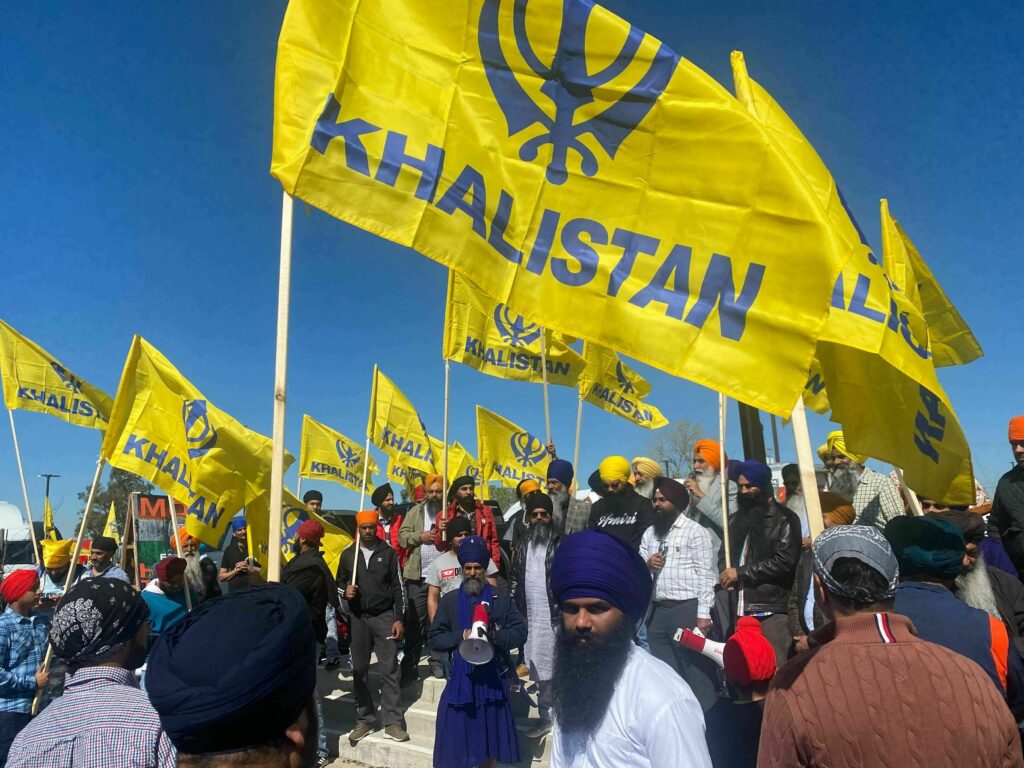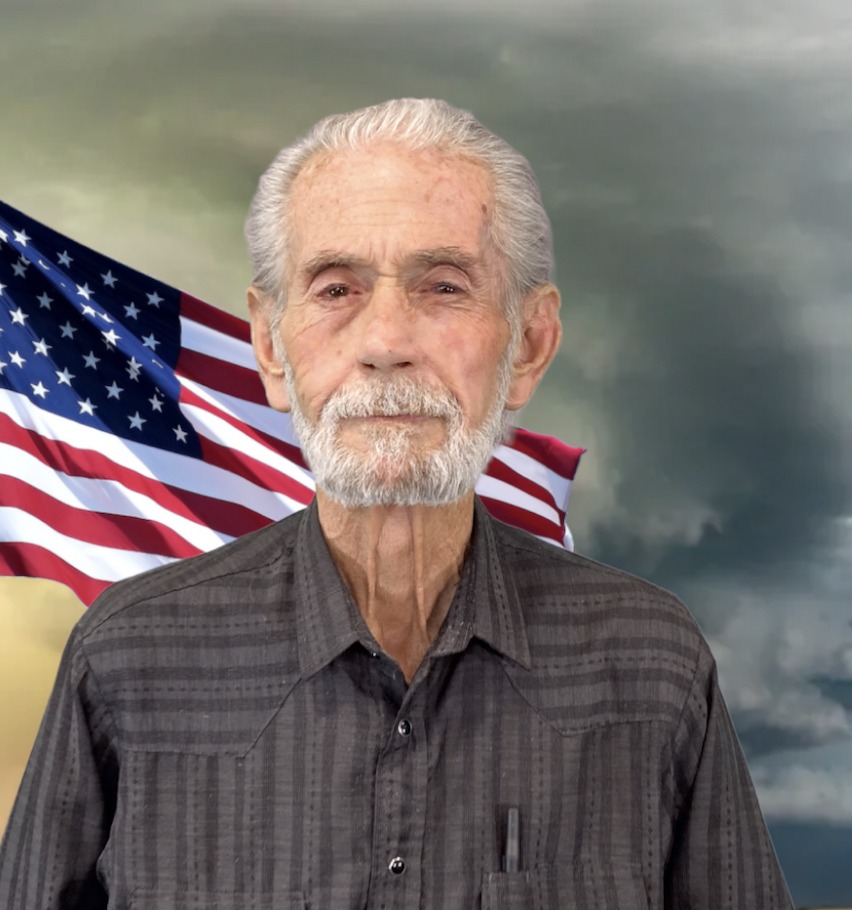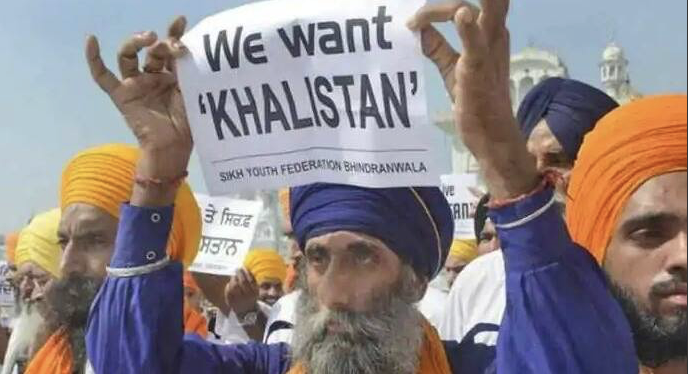Author Bob Arthur
Background Of Sikh State
The Sikhs, who strive for independence, refer to the state of ‘Punjab’, which was formed separately from India, as their ‘Homeland’ or ‘Khalistan’. It is worth noting that although the state was once ruled by Sikh Emperor Ranjit Singh, it became part of the British Empire in 1849. Ranjit Singh himself considered it to be the ‘Khalsa Sarkar’ or the ‘Government of the Khalsa’. During the reign of Ranjit Singh, the Sikh State stood out as one of the most efficiently governed states in the world for its time.
Based on my experience of running covert operations in the region, I had the privilege of gaining a profound understanding of the people of Punjab. However, I acknowledge that my perspectives may differ from those of certain Sikh historians. This is because as part of a deep conspiracy, all the successors of Ranjit Singh were systematically killed one by one, leaving the people of Punjab without any form of protection. If the great Ranjit Singh had been alive, he would have turned his gaze towards the West and positioned Punjab as a leader in Asia, even before Russia. Sadly, such courageous and noble individuals were subjected to centuries of brutality. Without a doubt, the Sikhs endured lives marked by poverty and slavery.

Based on my experience of running covert operations in the region, I had the privilege of gaining a profound understanding of the people of Punjab. However, I acknowledge that my perspectives may differ from those of certain Sikh historians. This is because as part of a deep conspiracy, all the successors of Ranjit Singh were systematically killed one by one, leaving the people of Punjab without any form of protection.
-Bob Arthur
British Period
After the British annexed Punjab in 1849, they enlisted Sikhs as their military partners. Despite comprising only 13% of the population, they provided 60% of the Combatants from Punjab. Shortly after the conclusion of WW-I, Sikhs found a glimmer of hope and believed that freedom was within reach. However, their aspirations soon faced obstacles orchestrated by the British authorities, who were under complete influence of Hindu leadership at that time. Moreover, the success of the communist revolution in Russia made the British reconsider their promises of leaving Punjab.
During this tumultuous period, the Sikhs shifted their focus from political sovereignty to the ‘Gurdwara Reforms Movement’. After a five-year struggle, the movement succeeded but fell under the influence of the Hindu Congress, which injected the element of Indian Nationalism into it. Afterward, influenced by the Hindu Congress, the Sikhs redirected all their efforts towards the freedom of the Indian Subcontinent. However, in doing so, they risked their own community’s political future and sovereignty.
In 1939, as nationalist sentiments rose in India, discussions about a separate nation for Muslims called “Pakistan” gained momentum. This had significant repercussions on various communities, including Sikh leaders who sought alternative solutions for Punjab. The Hindu Congress Party consistently betrayed Sikhs on key issues, such as the ‘Ravi Pledge’ of 1929, where they promised Sikh approval for any constitutional package but failed to honour it. Congress Party started direct negotiation with the All-India Muslim League and the British without consulting Sikhs.
The British reached the conclusion that both the Hindu Congress and Muslim League preferred a two-nation solution without any concessions for Sikhs. Hence on June 2, 1947, Admiral Lord Louis Mountbatten, the last Viceroy of India, announced the transfer of power to two separate entities; ‘Hindu India’ and ‘Muslim Pakistan’, comprising West Pakistan (now Pakistan) and East Pakistan (now Bangladesh).
Sikhs were faced with the choice of joining Muslim Pakistan with significant concessions or Hindu India. Ultimately, the Sikh leadership believed in the assurances of Hindu India and chose the latter option. They would later come to regret this choice when the Congress Party failed to uphold their promises of provincial autonomy.
The partition of Punjab resulted in millions of Sikhs and Muslims finding themselves on the “wrong” side of the borders, leading to the largest population movement in history with ten million becoming refugees. Punjabi Muslims in East Punjab travelled to Pakistan, while Sikhs migrated to Indian Occupied Punjab. Tragically, up to a million Sikhs were brutally massacred in the border regions. Some of the most horrific atrocities occurred in the Punjab. Despite the presence of the 55,000-strong Punjab Boundary Force, over one million people lost their lives. Mountbatten later faced criticism for expediting the partition process and failing to address the migration and communal violence that accompanied the birth of the new nations.
Sikhs Under Indian Occupation
After the partition of Punjab, Sikh leaders began a “freedom struggle” from Darbar Sahib Amritsar in 1955. The protest was suppressed by the Indian army and police, resulting in the arrest, and killing of many Sikhs. During this period the Sikhs’ desire for freedom caught Russian attention. The KGB funded the Naxalbari movement to divert Sikh youth towards communism, but it failed miserably to triumph over the power of Sikh faith. During this time, senior KGB officials frequently visited Delhi and Ludhiana, and held meetings with Punjabi laureates in Moscow.
In later revelations, KGB agent Vassily Mitrokhin admitted that the KGB took the failure of Communist Movement in Punjab personally. KGB then devised a plan to undermine Sikh religious traditions and suppress their cause. Indira Gandhi, backed by funding from the USSR, was to implement this plan. Mitrokhin also disclosed that the KGB had made unsuccessful attempts to tarnish America’s image in relation to the Sikh case, but these efforts proved futile. However, their actions resulted in the Indian Army attack on the most sacred place of Sikhs, The Golden Temple, and the elimination of Sant Bhindranwale, who was the most prominent and charismatic Sikh leader. Yet, not everything went according to the plan. Two Sikhs bodyguards assassinated Indira Gandhi. This led to a genocide of thousands of Sikhs in Capital City Delhi and other parts of India.
In response, Sikhs launched an armed struggle that nearly resulted in the creation of Khalistan, when the Prime Minister Rajiv Gandhi and his successors tried to negotiate with the armed Sikh leaders. Throughout this period of struggle, it is estimated that more than 100,000 Sikh youth were unlawfully detained and killed in fake encounters.
Presently, several major Sikh Organisations worldwide are actively engaged in the freedom struggle. Recently, a ‘Khalistan Referendum’ has gained significant support among Sikhs. The movement was further fuelled by the assassination of Canadian Sikh leader Hardeep Singh Nijhar in Canada. Canadian Prime Minister Justin Trudeau has blamed the Indian Govt for plotting the murder of Hardeep Singh Nijhar. His allegations have received strong backing from other ‘5 eyes’ nations shedding light on India’s repression of Sikhs for the world to see.
The murder of Hardeep Singh Nijhar is not just an act of terrorism but has become part of a larger geopolitical rivalry between USA and Russia.
Resurgence of the Sikhs in South Asia
It is truly astonishing that despite enduring oppression and violence from others, the Sikhs themselves have never become vengeful or violent towards Hindus or people of other communities. These individuals, known for their hard work and quick adaptation to new environments, may appear peculiar with their beards and turbans, but their inner nature is gentle and virtuous. Agriculture and Military have been their traditional career choices; but in sync with 21st Century they also dominate IT, engineering, medicine, and more. Oh, and did I mention their significant contributions to the trucking industry in America and Canada?
As American preeminence weakens, authoritarian regimes like Russia, China, India, Iran (I2RC) and others challenge the existing rules-based world order. India has closed its markets to American businesses while cozying up to China economically and forming a dangerous military alliance with Russia and Iran. Nuclear-armed Pakistan faces increasing instability, with its economic viability in doubt. The conflict between Pak-India has kept Afghanistan and entire Eurasia destabilized. It might give rise to a nuclear Armageddon – a conflict that could result in a minimum of 100 million casualties. Iran’s ability to resist the current world order and pose a threat to its neighboring countries can largely be attributed to the I2RC nexus. The war in Ukraine would have ended within a year with a Ukrainian victory if it weren’t for the crucial support provided to Russia through India and China.
But amidst this crisis, there’s a silver lining. This crisis presents an opportunity to redefine the subcontinent’s boundaries for lasting peace and prosperity. By recognizing the freedom of Khalistan, the world can put an effective end to the I2RC nexus which will bring stability and prosperity from South Asia to the Middle East to Europe. Establishment of a Sikh state will also provide mechanisms and systems to create other smaller states from Russia and China. Sikhs enjoy positive relationships with Hindus and Muslims alike, hence Khalistan would unlock trade opportunities on both sides, unleashing the full economic potential of the region. With their martial spirit and entrepreneurial prowess, Sikhs are poised to create a model state much needed in present time.

(Bob Arthur’s experience as an investigator spans 52 years; twenty years in various law enforcement capacities and thirty-two years as a private investigator and consultant. He has conducted investigations throughout the world including cases involving terrorism, espionage, and undercover operations involving counterespionage, and he’s a trained and experienced Hostage Negotiator. Past memberships include the International Association of Chiefs of Police, the U.S. Department of Justice Law Enforcement Coordinating Committee, Drug Enforcement and Training Sub Committees, and the International Drug Enforcement Officers Association.)



Leave a Reply